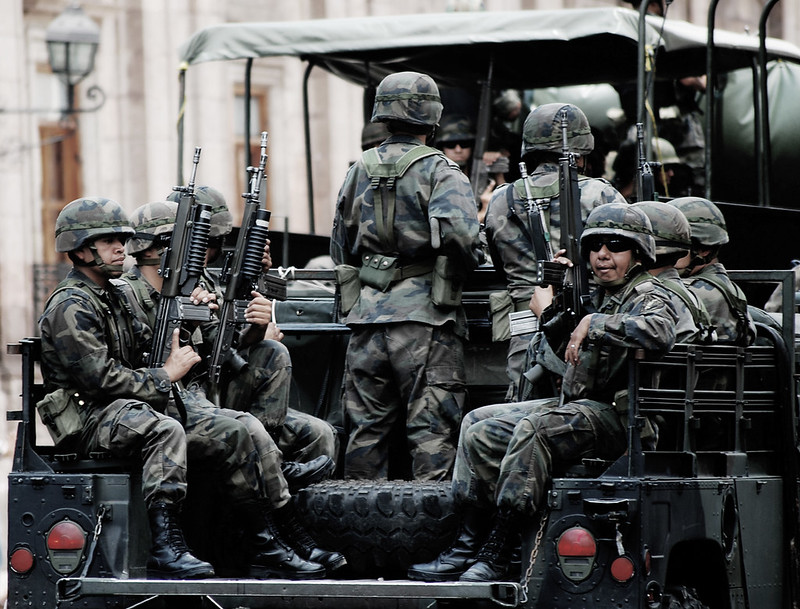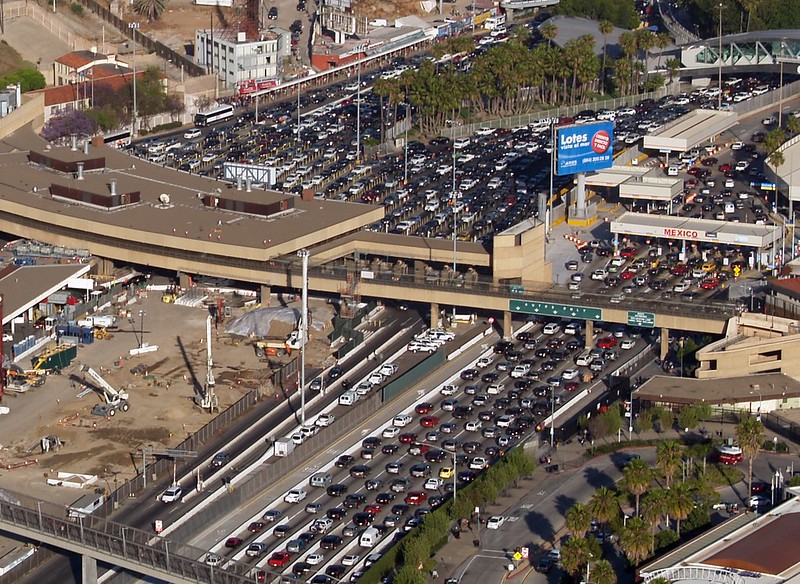
Mexico has responded to security threats by deploying its army on the streets.
“No more than 12 hours passed between the shooting of the Morena precandidate Miguel Ángel Zavala Reyes, and the shooting of the PAN precandidate, Armando Pérez Luna.”
Mexico has long suffered high levels of violence related to its powerful drug cartels. Violence often spikes during election season, as cartels seek to elect politicians aligned with their agendas and eliminate those opposed. According to the Spanish daily El País, recent assassinations in Mexico have contributed to growing fears that the country’s upcoming elections could witness more violence than in many previous election cycles.[i] The paper reports on two mayoral candidates in the municipality of Maravatío recently assassinated within hours of one another. The article mentions that earlier in the campaign season, cartels abducted and killed a third mayoral candidate from Maravatío. This area of the country features three powerful cartels contesting territory: the Jalisco New Generation Cartel, the Michoacán Family, and the Knights Templar. According to the second excerpted article by Diario de México, which highlights the research of NGO group Data Cívica, 36 aspirants to public office or members of their families were assassinated in January and February alone.[ii] Mexico’s cartels continue to accrete power, and during election season, seek to play a primary role in the selection of candidates. While candidates for federal office receive security protection from the government, local candidates do not. In Mexico, it is often control of local candidates that proves most important for cartel operations.
Sources:
“El terror en Maravatío: asesinados dos precandidatos a la alcaldía en menos de 12 horas (Terror in Maravatío: two mayoral candidates murdered in less than 12 hours),” El País (Spanish daily with excellent regional coverage), 27 February 2024. https://elpais.com/mexico/elecciones-mexicanas/2024-02-27/el-terror-en-maravatio-asesinados-dos-precandidatos-a-la-alcaldia-en-menos-de-12-horas.html
No more than 12 hours passed between the shooting of the Morena precandidate Miguel Ángel Zavala Reyes, and the shooting of the PAN precandidate, Armando Pérez Luna; two of the people who were seeking to become the next municipal president of Maravatío, a municipality of 80,000 inhabitants in the State of Michoacán…According to the group Data Cívica, ‘In Mexico, electoral violence has become a tool of organized crime to influence the public life of states and municipalities’…During the month of January, at least five candidates or aspirants for elected office were murdered in Mexico.
“Febrero fue letal para aspirantes a cargo de elección popular: ONG (February was lethal for candidates for popular election positions: NGO),” Diario de México (one of the country’s oldest dailies), 15 March 2024. https://www.diariodemexico.com/mi-nacion/febrero-fue-letal-para-aspirantes-cargo-de-eleccion-popular-ong At least five candidates or aspirants for elected office were murdered in Mexico during February, bringing the total to 10 in the first two months of the year, the non-governmental organizations Data Cívica reported this Friday. The number of homicides related to political violence rises to 36 when public officials and relatives of politicians are also considered, which are detailed in the report ‘Voting between bullets’ in February.
Notes:
[i] For more information on the potential criminal realignment in Mexico’s elections, see: Parker Asmann, “Mexico’s 2024 Election Could Spark Violent Criminal Realignments,” InSight Crime, 15 January 2024, https://insightcrime.org/news/mexico-2024-election-violent-criminal-realignments/
[ii] To read more about the project to track election violence by Data Cívica, see: “Voting Between Bullets, Understanding Criminal-Electoral Violence in Mexico,” https://votar-entre-balas.datacivica.org/
Image Information:
Image: Mexico has responded to security threats by deploying its army on the streets.
Source: https://www.flickr.com/photos/isan/3740048960
Attribution: CC BY-NC-ND 2.0 DEED.

